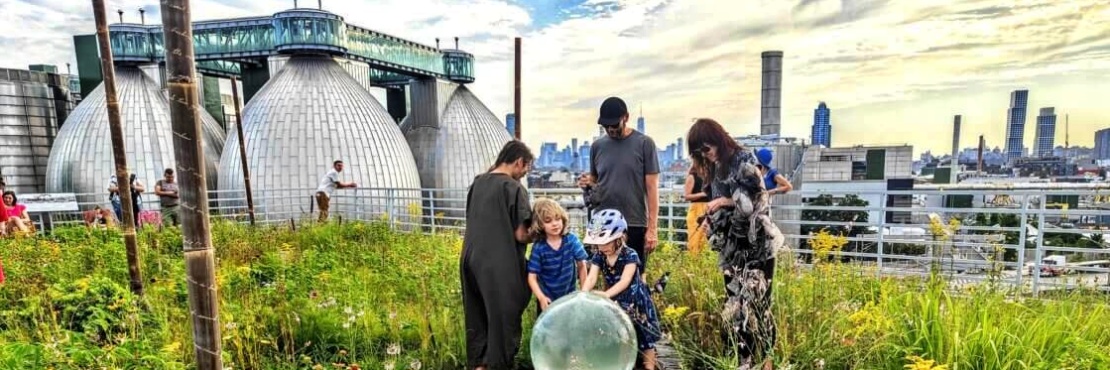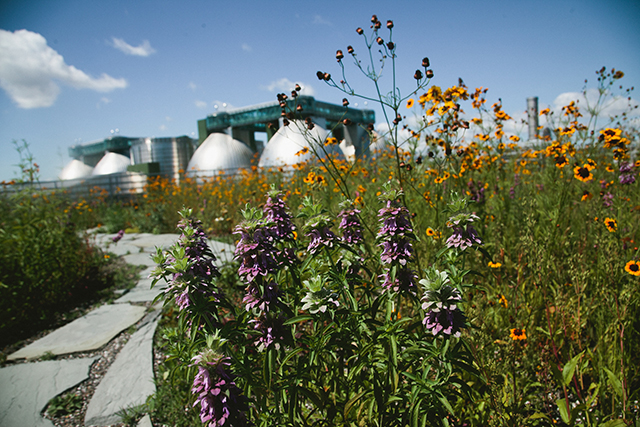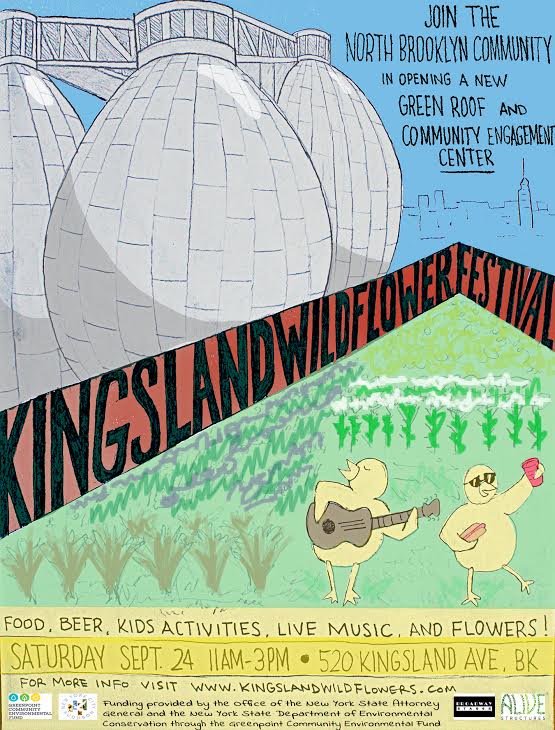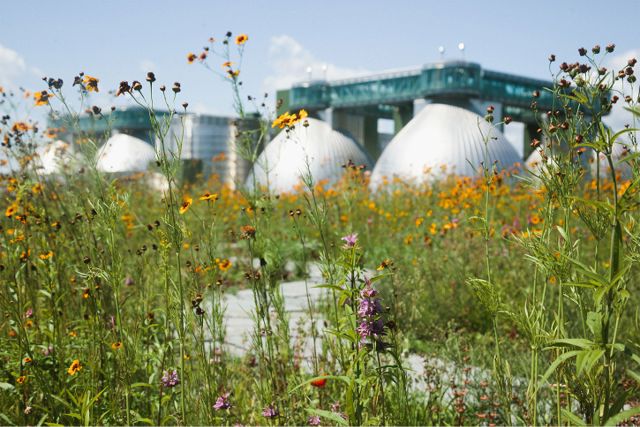Ximena Del Cerro of Brooklyn Paper writes:
From the rooftop of the warehouse at 520 Kingsland Ave. next to the Newton Creek Wastewater Treatment Plant, the industrial sounds of pipes and gases coming out of chimneys from all around get out drowned by the buzzing of hundreds of pollinators that take at break among wildflowers and tall grass.
Greenpointers are buzzing!
The 7th annual Kingsland Wildflowers Festival welcomed large crowds to explore the 24,000 square-foot green roof in the middle of a sea of industrial plants on Sunday. Kingsland Wildflowers’ green roof is home to an abundance of native plants and a pit stop for insects in a sea of metal and concrete. The lush rooftop overlooks the Manhattan skyline and the heavy industrial zones of Greenpoint — including the Newtown Creek federal Superfund site.
Both the views and plantings create an opportunity for conversation and education about New York City’s green infrastructure initiatives, environmental policy and the role of locals in the growing climate crisis. Scientists and advocates attended the festival to provide information on how New Yorkers can do their part to ease the city’s environmental footprint with projects as ambitious as green rooftops and as simple as choosing native plants and pollinator-friendly flowers for home window boxes.
“Imagine having to walk through the entire city, from the Bronx to Staten Island without catching a break, without finding food,” said Green Roof Researchers Alliance volunteer Dustin Patterson. “No living being should be through such exhaustion. It’s so easy and so beneficial for us to provide these types of spaces. Being out here even improves our mental health.”
Some species thrive more in cities than in rural or suburban areas because of fewer pesticides. Insects are the vital pollinators and recyclers of ecosystems and the base of food webs everywhere.
In the U.S., the population of monarch butterflies fell by 90% in the last 20 years, a loss of 900 million individuals, while the bumblebee, which once lived in 28 states, dropped by 87% over the same period, according to the World Wildlife Organization. At plain sight, one can see wasps, bees, butterflies and birds at the green roof in north Brooklyn.
Green roofs capture dust, heavy rains and give buildings an extra layer of insulation. As soil and greenery absorb more heat than concrete or cement, they ease urban heat island effects and improve air quality.
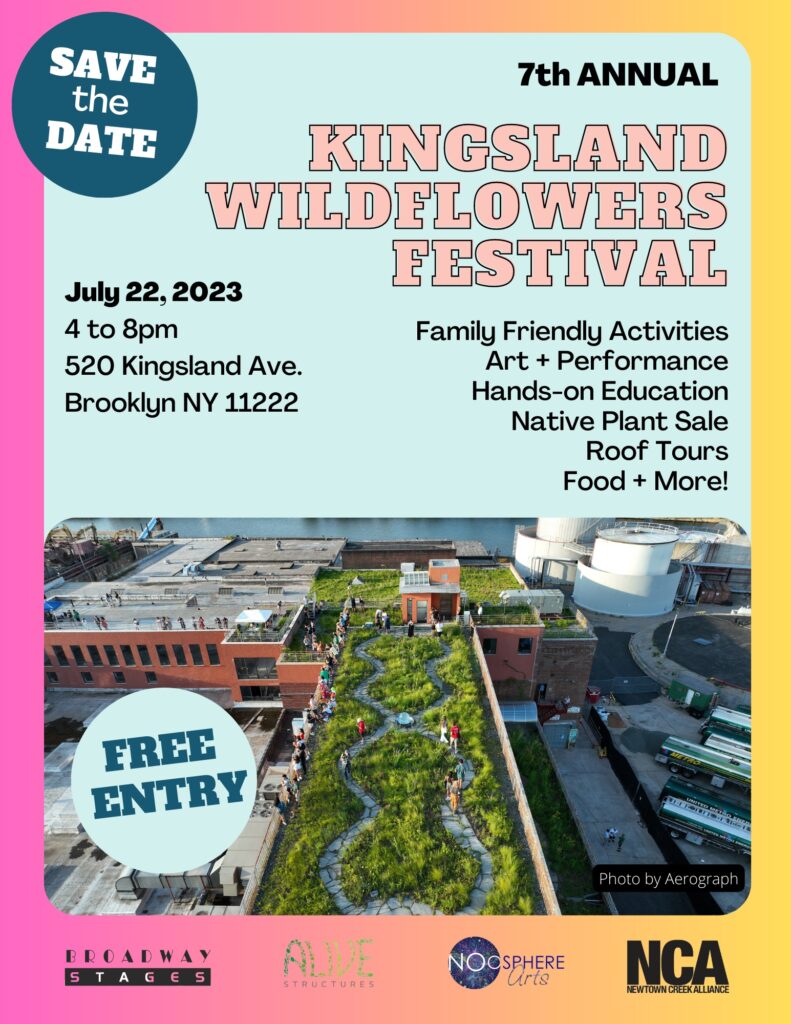
 Greenroofs.comConnecting the Planet + Living Architecture
Greenroofs.comConnecting the Planet + Living Architecture
